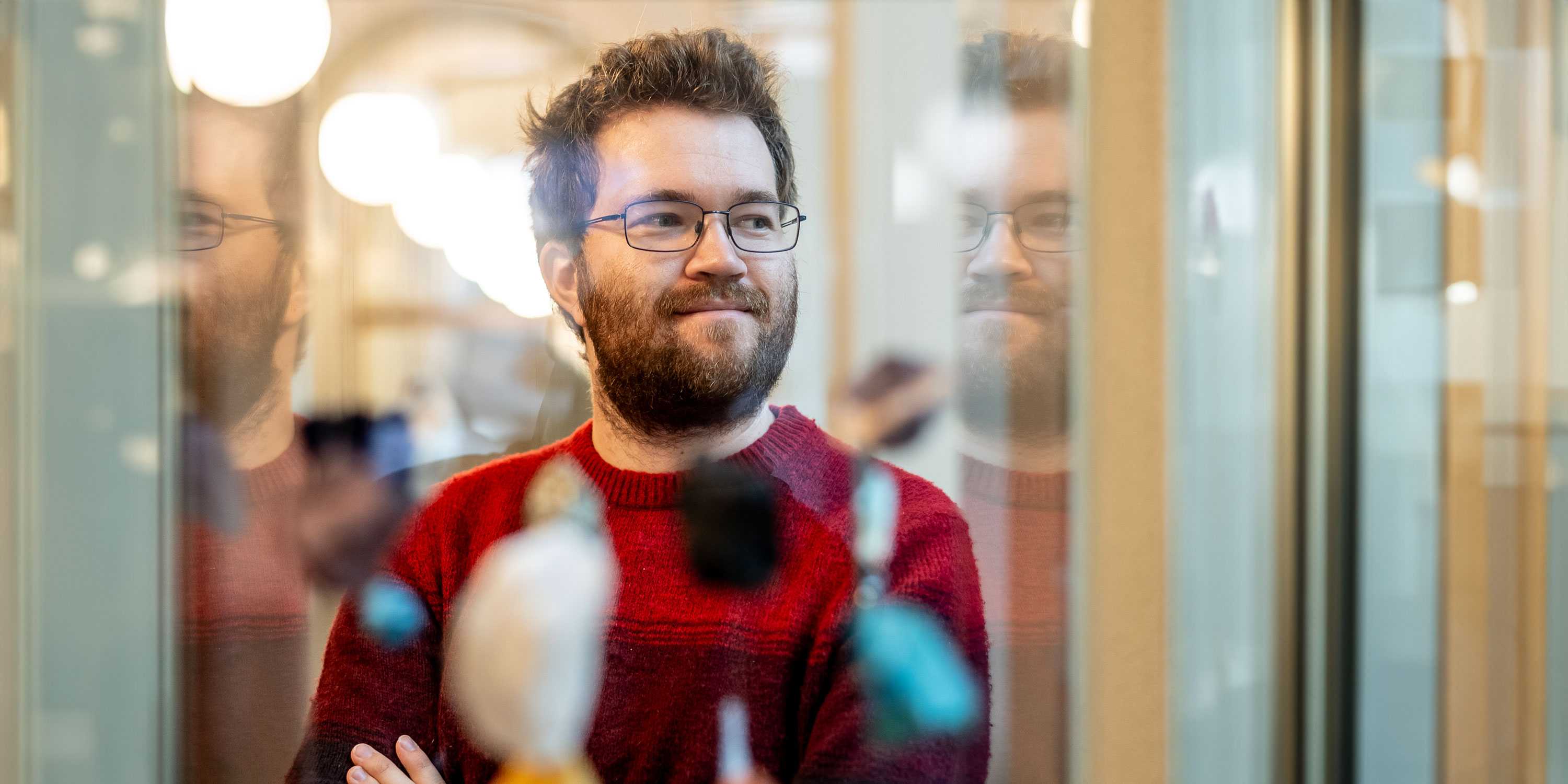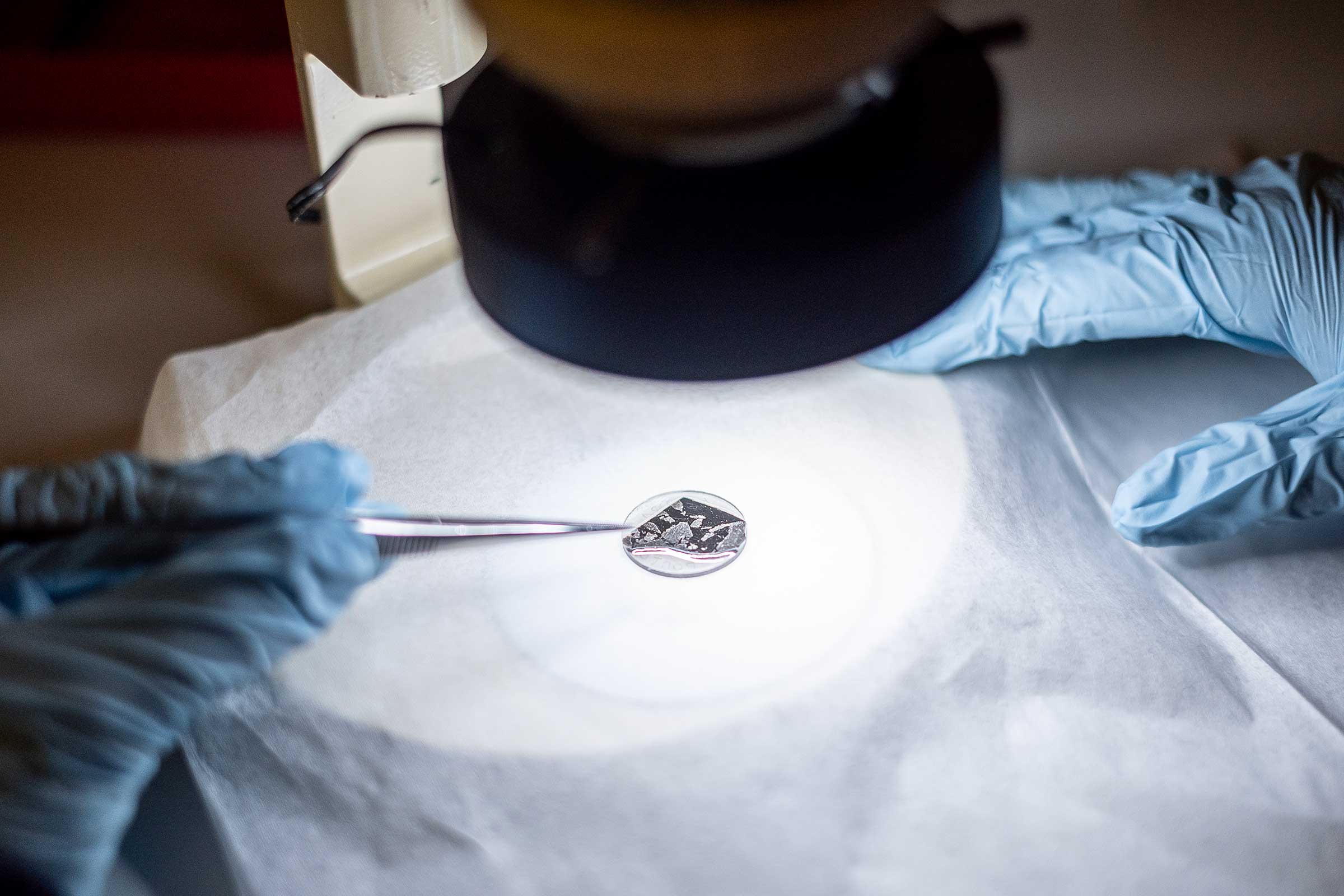Craig Walton is the first NOMIS Fellow at the Centre for Origin and Prevalence of Life at ETH Zurich. With an unconventional idea, he wants to find out the conditions under which life originated on Earth.

The basic idea behind Craig Walton’s research sounds fathomable: “If we can reproduce the geological conditions prevailing on Earth before life began, we’ll be able to find out how life originated and how it was able to continue,” the earth scientist explains. “To explore this possibility, I want to build miniature planetary landscapes inside glass jars.” But what exactly were these conditions and where do the ingredients needed to recreate them come from?
“Findings from Earth and planetary science research deliver important information about the environment that existed on Earth over four billion of years ago. By working closely with researchers from other disciplines who are also investigating the origin of life, we can add more parts to the puzzle,” the scientist continues.
To implement his idea – a highly complex undertaking – Craig Walton has access to the interdisciplinary network of the Centre for Origin and Prevalence of Life (COPL) at ETH Zurich. “At the Centre we can pool knowledge and hopefully answer questions together,” he says excitedly.
Scottish volcanoes and Pokémon
Walton’s interest in geology started young, having grown up in Scotland, near Edinburgh and the famous mountain of volcanic origin, Arthur’s Seat. Scotland’s rugged landscape – which has played an important role in many significant geological discoveries – was one factor that spurred the researcher’s passion for earth sciences. However, the second reason for choosing the field is more surprising. “It was Pokémon,” Walton acknowledges with a laugh. “The earlier games often involved rocks and the way in which life and geology are connected. This idea echoes throughout my research.”
The fact that he’s now conducting this research in the group led by ETH Professor Maria Sch?nb?chler at the Institute of Geochemistry and Petrology is thanks to the partnership between the NOMIS Foundation and ETH. After completing his doctorate and working as a researcher at the University of Cambridge, he applied for the three- to four-year NOMIS-ETH fellowship and was accepted. “The fellowship gives me the freedom to explore ideas I’ve been thinking about for ten years. This chance to take risks and chase a vision is incredibly valuable,” Walton enthuses.
Cosmic dust: a free lunch for early life?
He’s convinced that COPL is the perfect place for his research. “The resources and expertise here are unique. Whether material sciences or information technology, findings from many fields are relevant when it comes to the search for the origin of life.”
In Sch?nb?chler’s lab, he can study crucial samples: micrometeorites and cosmic dust that she was able to bring back from an expedition in Antarctica. Based on his research, Walton suspects these powdery extraterrestrial materials played a role in the formation of life. “Cosmic dust is everywhere – there will be some on the roof of your house, right now! It probably accumulated in certain places on early Earth. Crucially, cosmic dust is made up of the elements needed by life and, due to its unstable chemical form, may have easily broken down, offering something of a ‘free lunch’ for first life,” the researcher explains.

However, a free lunch alone isn’t enough to get life going. “I’m not only interested in how the chemistry of life first started, but also in how it was able to continue. My guess is that only a few environments could have supported the large appetite of emerging life. Life would then have had to quickly learn to be efficient with the resources available, as early stocks of easily accessed ‘food’ started to run out. In other words, it learned how to recycle!” the geologist continues. “Microbes figured out how best to use limited resources billions of years ago – perhaps human civilisations should follow their example.”
As far as expectations go, the researcher remains realistic. “The goal is not to solve the puzzle of life in the next four years,” he laughs, “but hopefully we’ll uncover something new and exciting!” However, any new insights about Earth will also provide clues to the question of life on other planets. Craig Walton doesn’t rule out the possibility that life exists – or has existed – in the far reaches of outer space. However, he also thinks it’s conceivable that the particular history of life on Earth is unique. “I think the chance that we’ll find intelligent life is small. Aliens might indeed be green; but look like microbes, rather than humans!”
This article by Andrea Zeller first appeared in "Uplift", the magazine of the external page ETH Foundation.
NOMIS-ETH-Fellowship-Programme
The NOMIS Foundation – ETH Fellowship Programme gives early-career researchers the opportunity to explore the origin of life, take risks and build bridges across disciplines – all in a unique environment. The fellowships are hosted by the Centre for Origin and Prevalence of Life at ETH Zurich.